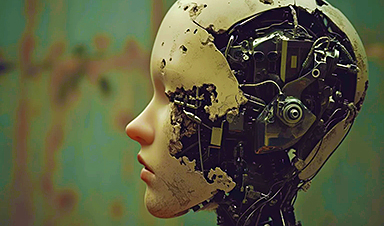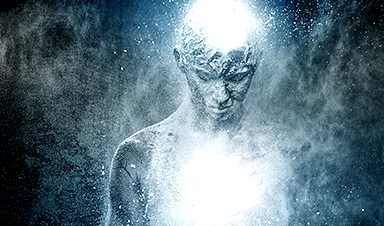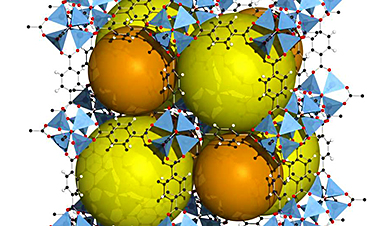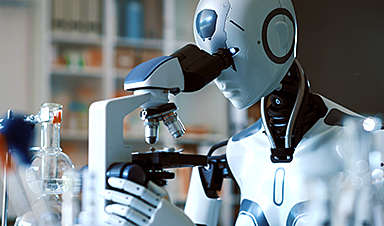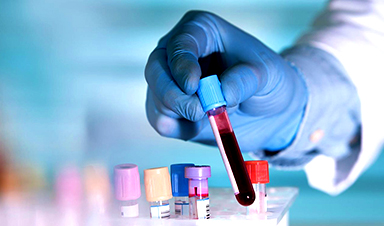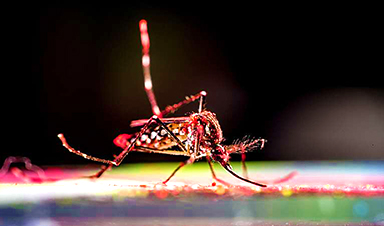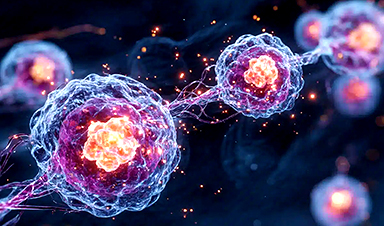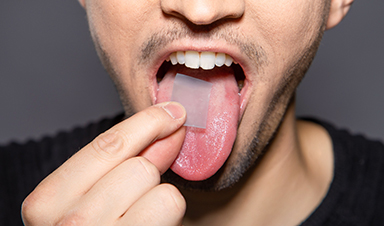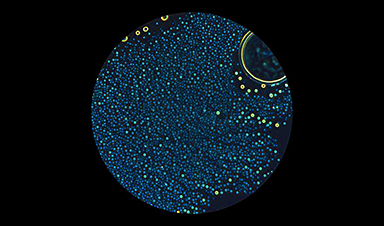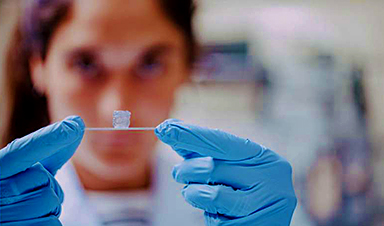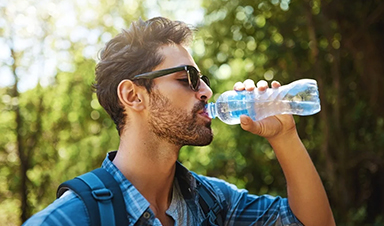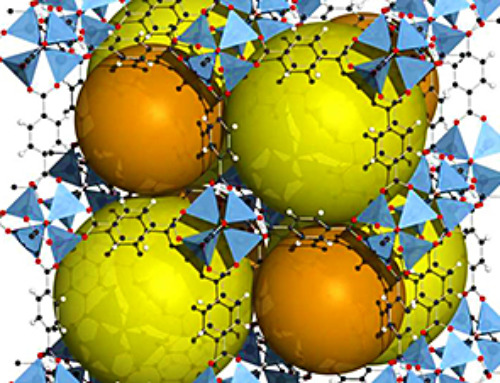Researchers from the University of Copenhagen have become the first in the world to mathematically prove that, beyond simple problems, it is impossible to develop algorithms for AI that will always be stable.
ChatGPT and similar machine learning-based technologies are on the rise. However, even the most advanced algorithms face limitations. Researchers from the University of Copenhagen have made a groundbreaking discovery, mathematically demonstrating that, beyond basic problems, it's impossible to develop AI algorithms that are always stable. This research could pave the way for improved testing protocols for algorithms, highlighting the inherent differences between machine processing and human intelligence.
The scientific article describing the result has been approved for publication at one of the leading international conferences on theoretical computer science.
Machines interpret medical scanning images more accurately than doctors, translate foreign languages, and may soon be able to drive cars more safely than humans. However, even the best algorithms do have weaknesses. A research team at the Department of Computer Science, University of Copenhagen, tries to reveal them.
Take an automated vehicle reading a road sign as an example. If someone has placed a sticker on the sign, this will not distract a human driver. But a machine may easily be put off because the sign is now different from the ones it was trained on.
"We would like algorithms to be stable in the sense, that if the input is changed slightly the output will remain almost the same. Real life involves all kinds of noise which humans are used to ignore, while machines can get confused," says Professor Amir Yehudayoff, heading the group.
A language for discussing weaknesses
As the first in the world, the group together with researchers from other countries has proven mathematically that apart from simple problems it is not possible to create algorithms for Machine Learning that will always be stable. The scientific article describing the result was approved for publication at one of the leading international conferences on theoretical computer science, Foundations of Computer Science (FOCS).
"I would like to note that we have not worked directly on automated car applications. Still, this seems like a problem too complex for algorithms to always be stable," says Amir Yehudayoff, adding that this does not necessarily imply major consequences in relation to the development of automated cars:
"If the algorithm only errs under a few very rare circumstances this may well be acceptable. But if it does so under a large collection of circumstances, it is bad news."
The scientific article cannot be applied by the industry to identify bugs in its algorithms. This wasn't the intention, the professor explains:
"We are developing a language for discussing the weaknesses in Machine Learning algorithms. This may lead to the development of guidelines that describe how algorithms should be tested. And in the long run, this may again lead to the development of better and more stable algorithms."
From intuition to mathematics
A possible application could be for testing algorithms for the protection of digital privacy.
"Some companies might claim to have developed an absolutely secure solution for privacy protection. Firstly, our methodology might help to establish that the solution cannot be absolutely secure. Secondly, it will be able to pinpoint points of weakness," says Amir Yehudayoff.
First and foremost, though, the scientific article contributes to theory. Especially the mathematical content is groundbreaking, he adds: "We understand intuitively, that a stable algorithm should work almost as well as before when exposed to a small amount of input noise. Just like the road sign with a sticker on it. But as theoretical computer scientists, we need a firm definition. We must be able to describe the problem in the language of mathematics. Exactly how much noise must the algorithm be able to withstand, and how close to the original output should the output be if we are to accept the algorithm to be stable? This is what we have suggested an answer to."
Important to keep limitations in mind
The scientific article has received large interest from colleagues in the theoretical computer science world, but not from the tech industry. Not yet at least.
"You should always expect some delay between a new theoretical development and interest from people working in applications," says Amir Yehudayoff while adding smilingly: "And some theoretical developments will remain unnoticed forever."
However, he does not see that happening in this case: "Machine Learning continues to progress rapidly, and it is important to remember that even solutions which are very successful in the real world still do have limitations. The machines may sometimes seem to be able to think but after all, they do not possess human intelligence. This is important to keep in mind."
Reference: "Replicability and Stability in Learning" by Zachary Chase, Shay Moran and Amir Yehudayoff, 2023, Foundations of Computer Science (FOCS) conference.
DOI: 10.48550/arXiv.2304.03757
News
Scientists Begin $14.2 Million Project To Decode the Body’s “Hidden Sixth Sense”
An NIH-supported initiative seeks to unravel how the nervous system tracks and regulates the body’s internal organs. How does your brain recognize when it’s time to take a breath, when your blood pressure has [...]
Scientists Discover a New Form of Ice That Shouldn’t Exist
Researchers at the European XFEL and DESY are investigating unusual forms of ice that can exist at room temperature when subjected to extreme pressure. Ice comes in many forms, even when made of nothing but water [...]
Nobel-winning, tiny ‘sponge crystals’ with an astonishing amount of inner space
The 2025 Nobel Prize in chemistry was awarded to Richard Robson, Susumu Kitagawa and Omar Yaghi on Oct. 8, 2025, for the development of metal-organic frameworks, or MOFs, which are tunable crystal structures with extremely [...]
Harnessing Green-Synthesized Nanoparticles for Water Purification
A new review reveals how plant- and microbe-derived nanoparticles can power next-gen water disinfection, delivering cleaner, safer water without the environmental cost of traditional treatments. A recent review published in Nanomaterials highlights the potential of green-synthesized nanomaterials (GSNMs) in [...]
Brainstem damage found to be behind long-lasting effects of severe Covid-19
Damage to the brainstem - the brain's 'control center' - is behind long-lasting physical and psychiatric effects of severe Covid-19 infection, a study suggests. Using ultra-high-resolution scanners that can see the living brain in [...]
CT scan changes over one year predict outcomes in fibrotic lung disease
Researchers at National Jewish Health have shown that subtle increases in lung scarring, detected by an artificial intelligence-based tool on CT scans taken one year apart, are associated with disease progression and survival in [...]
AI Spots Hidden Signs of Disease Before Symptoms Appear
Researchers suggest that examining the inner workings of cells more closely could help physicians detect diseases earlier and more accurately match patients with effective therapies. Researchers at McGill University have created an artificial intelligence tool capable of uncovering [...]
Breakthrough Blood Test Detects Head and Neck Cancer up to 10 Years Before Symptoms
Mass General Brigham’s HPV-DeepSeek test enables much earlier cancer detection through a blood sample, creating a new opportunity for screening HPV-related head and neck cancers. Human papillomavirus (HPV) is responsible for about 70% of [...]
Study of 86 chikungunya outbreaks reveals unpredictability in size and severity
The symptoms come on quickly—acute fever, followed by debilitating joint pain that can last for months. Though rarely fatal, the chikungunya virus, a mosquito-borne illness, can be particularly severe for high-risk individuals, including newborns and older [...]
Tiny Fat Messengers May Link Obesity to Alzheimer’s Plaque Buildup
Summary: A groundbreaking study reveals how obesity may drive Alzheimer’s disease through tiny messengers called extracellular vesicles released from fat tissue. These vesicles carry lipids that alter how quickly amyloid-β plaques form, a hallmark of [...]
Ozone exposure weakens lung function and reshapes the oral microbiome
Scientists reveal that short-term ozone inhalation doesn’t just harm the lungs; it reshapes the microbes in your mouth, with men facing the greatest risks. Ozone is a toxic environmental pollutant with wide-ranging effects on [...]
New study reveals molecular basis of Long COVID brain fog
Even though many years have passed since the start of the COVID-19 pandemic, the effects of infection with SARS-CoV-2 are not completely understood. This is especially true for Long COVID, a chronic condition that [...]
Scientists make huge Parkinson’s breakthrough as they discover ‘protein trigger’
Scientists have, for the first time, directly visualised the protein clusters in the brain believed to trigger Parkinson's disease, bringing them one step closer to potential treatments. Parkinson's is a progressive incurable neurological disorder [...]
Alpha amino acids’ stability may explain their role as early life’s protein building blocks
A new study from the Hebrew University of Jerusalem published in the Proceedings of the National Academy of Sciences sheds light on one of life's greatest mysteries: why biology is based on a very specific set [...]
3D bioprinting advances enable creation of artificial blood vessels with layered structures
To explore possible treatments for various diseases, either animal models or human cell cultures are usually used first; however, animal models do not always mimic human diseases well, and cultures are far removed [...]
Drinking less water daily spikes your stress hormone
Researchers discovered that people who don’t drink enough water react with sharper cortisol spikes during stressful events, explaining why poor hydration is tied to long-term health risks. A recent study in the Journal of Applied [...]
